2013.01.15 12:38
The quest for Architectural Theory
Hint (of recent architectural theory/practice): less (homogeneity) is more (diversity).
2013.01.21 12:07
I can't tell
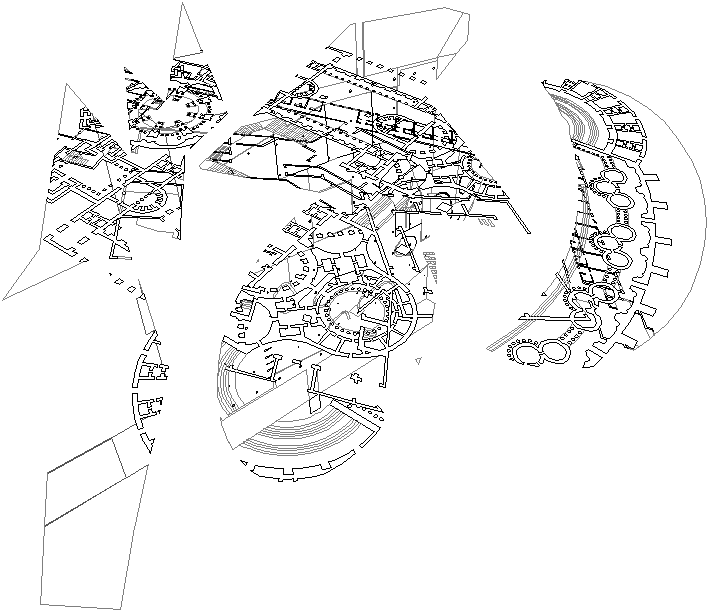
Is this 1999 Deterritorialized Baroque via Deconstructivism?
Or 1999 Reterritorialized Deconstructivism via the Baroque?
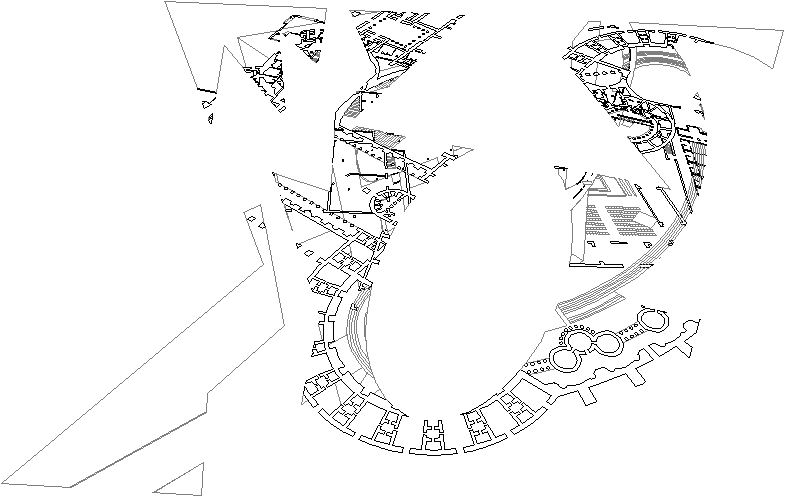
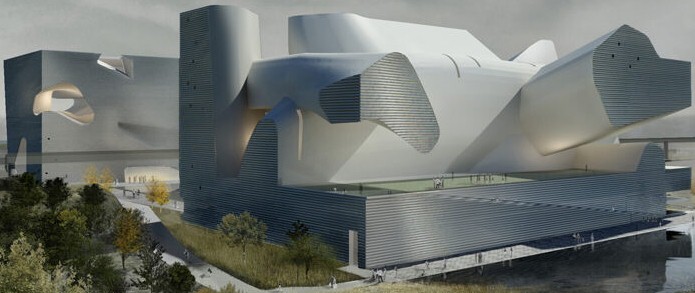
Steven Holl, Tianjin Ecocity Ecology and Planning Museums, 2013
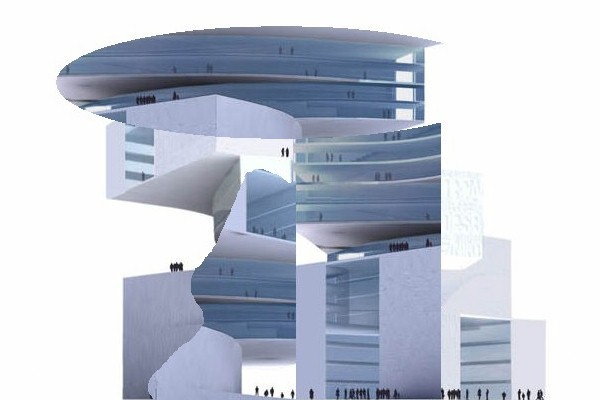
Stephen Lauf, Old School of New Thinking, scheme 1, 2007.09.22
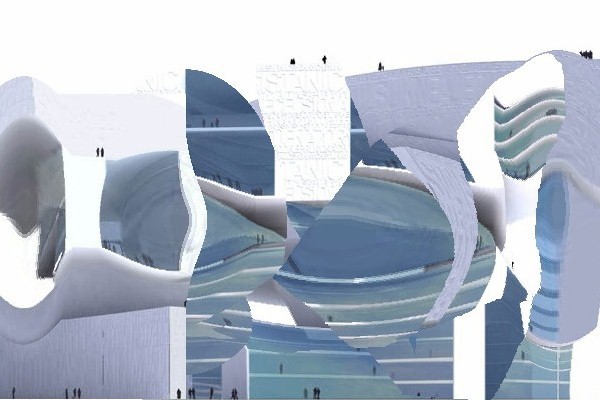
Stephen Lauf, Old School of New Thinking, scheme 3, 2007.09.22
Yes Virginia, the Pre-Raphaelites came after Raphael.
But what comes before Pre-Shrine?
Museumpeace, of course.
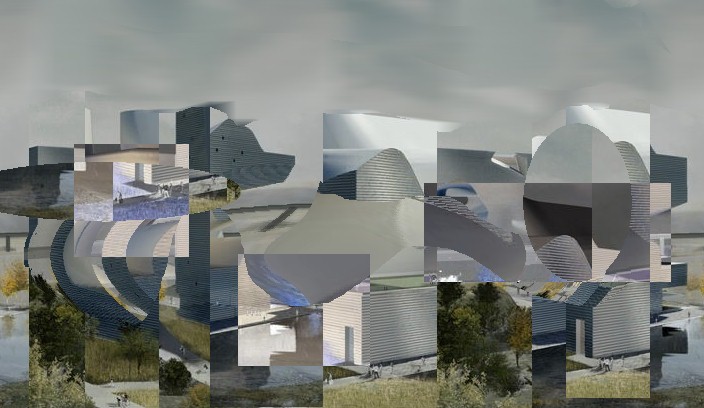
Quondam, Yin/Yang Compare/Contrast Museum/Pre-Shrine, 2013.01.21
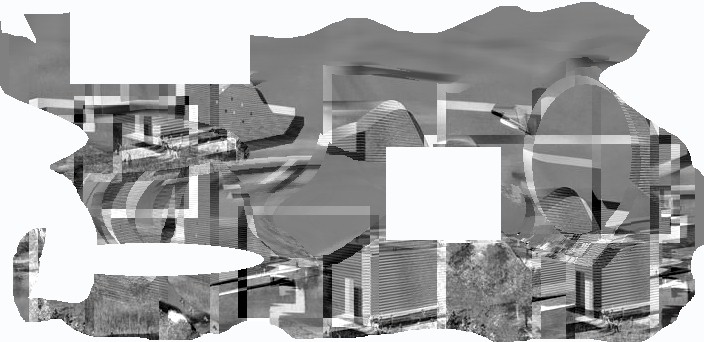
...maybe even a floor plan.
| |
2013.01.26 11:23
26 January
2013.01.25
Rem Koolhaas has stated: "Fundamentals will be a Biennale about architecture, not architects. After several Biennales dedicated to the celebration of the contemporary, Fundamentals will focus on histories – on the inevitable elements of all architecture used by any architect, anywhere, anytime (the door, the floor, the ceiling etc.) and on the evolution of national architectures in the last 100 years. In three complementary manifestations – taking place in the Central Pavilion, the Arsenale, and the National Pavilions – this retrospective will generate a fresh understanding of the richness of architecture's fundamental repertoire, apparently so exhausted today.
In 1914, it made sense to talk about a "Chinese" architecture, a "Swiss" architecture, an "Indian" architecture. One hundred years later, under the influence of wars, diverse political regimes, different states of development, national and international architectural movements, individual talents, friendships, random personal trajectories and technological developments, architectures that were once specific and local have become interchangeable and global. National identity has seemingly been sacrificed to modernity. ..."
And not Koolhaas:
2001.01.26
I'm trying to come to grips with the notion of why European colonials didn't simply accept the architectures that were indigenous to the lands that they (the Europeans) colonized. I see this as a negative action because I think a case can be made that many of this planets indigenous architectures are now virtually extinct because of Western colonialism/imperialism. During the first half of the 20th century, while large parts of the world were still colonies of Europe, Western modern architecture or the International Style (again a term used more for convenience) continued the global domination of Western style and furthered the extinction of indigenous architectures.
As much as I like Classical Greek and Roman architecture and Modern architecture, I nonetheless see it as a tremendous lose to architecture in general that these styles are now so global at what seems to be the expense of so many other architectures.
2003.09.01
...may indeed be right about there being a lack in architectural history when it comes to explaining shifts from style to style (and this interests me greatly), but I'm not convinced so far that evolutionary theory (which ever one that may be) is the best(?) way to explain shifts from style to style.
Up until (more or less) the "International Style", architectures where very much linked to geography/locale and the politics(/religion) that comes with geography. Of course, European colonialism can be seen as an "internationalization" (or is it "globalization"?) of European/Western architecture precursing the "International Style," as well as the beginning of the eradication of many indigenous architectural styles throughout the world. Is this history best explained as evolutionary? Is the shift from Mayan architecture to Baroque architecture in Mexico, for example, something evolutionary? Not exactly survival of the fittest; more like survival of the one's with the guns and the greed, and, oh yes, the holy mission to spread the Christian faith.
Personally, I sometimes wonder whether Mayan architecture may have sometime/somehow played an influencing/inspiring role in terms of (particularly) Spanish Renaissance and Baroque architecture.
2005.12.02
I agree that there is a kind of hegemony operating within architecture today (and definitely since the Modern Movement/International Style), but architecture wasn't always that way. Most of architectures' histories are like languages' histories in that they were all tied/related to specific places on the planet and reflected the culture of those places.
Reflecting on what presently constitutes architectural "history," perhaps architecture is now a world trade commodity more than anything else.
Is the next big thing to mix up the fashion brands? Wear your Foster pants with Woods belt over Eisenman panties?
Check out 1914.
And regarding architecture's "Fundamentals," compare and contrast Hamlin's Forms & Functions of 20th Century Architecture, volume 1 (1952). Chapters:
1. The Elements of Building: Introduction
2. The Use Elements of Building: Rooms for Public Use
3. The Use Elements of Building: Rooms for Private Use
4. The Use Elements of Building: Service Areas
5. The Use Elements of Building: Horizontal Circulation
6. The Use Elements of Building: Vertical Circulation
7. Mechanical Equipment
8. The Use Elements of Structure: Bearing Walls
9. The Use Elements of Structure: Non-Bearing Walls
10. The Use Elements of Structure: Doors and Doorways
11. The Use Elements of Structure: Windows
12. The Use Elements of Structure: Columns and Piers
13. The Use Elements of Structure: Beams, Girders, Ceilings, and Floors
14. Arches and Vaults I: Arches
15. Arches and Vaults II: Vaults
16. Roofs, Gutters, and Flashing
17. The Site in Relation to Building
18. Gardens and Buildings
19. Elements of the Modern Interior
20. Ornament
I'm interested to see if and/or how 'Ornament' will be present[ed] in 2014.
| |
2013.01.26 18:29
Rem Koolhaas announces "Fundamentals" to be 2014's Venice Biennale theme
Perhaps underlying the theme is a wave of de-territorialization and re-territorialization that hasn't been registered yet.
I'd say a de-territorialized critic is even more dangerous.
2007.06.03
Not so much outside, rather, more beyond inside. Very much in the territory, but not within the normal restraints of the territory.
If you're in the fourth dimension, does that mean you can have your cake and eat it too?
2007.06.04
2013.01.29 09:21
Has Richard Meier's work morphed much over the years in your opinion?
Has the language morphed much? No.
Nor has the vocabulary been added to much over the years.
It's an insular language, but any program can be written in it.
It's easily enough understood by virtually anyone anywhere, but, no matter where, it's virtually always foreign.

Even the tattoo is "one language fits all."
"And the Lifetime Achievement Award for the Most Non-Indigenous Architecture Anywhere goes to..."
2013.01.29 09:49
Jerde-designed mixed-use destination in Moscow begins construction
Ah, the Khrushchev finally visits Disneyland style.
Overall, I think it's not Russian enough, but, who knows, maybe it's the Russians that are behind global warming, because they may well profit from it.
Bombs do not choose. They will hit everything.
--Nikita Khrushchev
If you cannot catch a bird of paradise, better take a wet hen.
--Nikita Khrushchev


| |
2013.01.31 16:35
Foster + Partners works with European Space Agency to 3D print structures on the moon

Perhaps further inspiration can be gleaned from Isamu Noguchi and Louis I. Kahn...
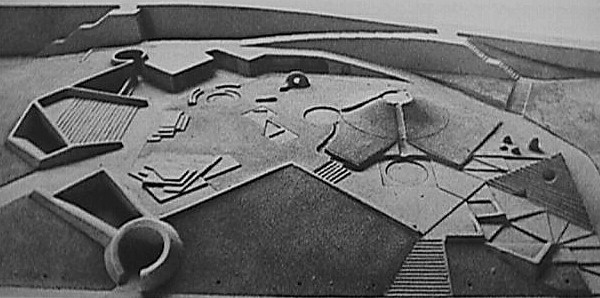
The ultimate in deterritorialization (and reterritorialization) even!
2013.02.28 11:49
Thread Central
Still spot reading (indexed passages, whole chapters) The Autopoiesis of Architecture, both volumes, and beginning to wonder whether these books will prove to be highly influential in subtle ways that don't even relate specifically to parametrics. The books cover a large range of topics, all delivered in condensed form, and it is this condensification that I think manifests the high potential for longevity of influence.
Bilocation can be fun. Inspiring, even.
Durand Revisted Parametrically--sometime in the 21st century?
2013.03.21 13:41
Old school - when it was done manually - anyone care to share some old work?
While there are things to be learned from a (nostalgic) look back at architectural drawings before CAD, it is probably even more important to (now) learn from how CAD influenced/changed (all kinds of) architectural drawing, or, I should say, all kinds of architectural data sets.
2013.03.21 17:42
Old school - when it was done manually - anyone care to share some old work?
Starting on a personal level, CAD more than doubled my graphic dexterity. I always liked drawing architecturally, and with CAD came to opportunity to generate drawings that would otherwise be very difficult to execute by hand. Granted, I've been fully versed with sophisticated, fully integrated 2D/3D CAD drawing since 1983, and it was indeed the capability of drawing in 3D that manifested the larger portion of the new graphic dexterity.
The notion of what a drawing itself is also changed in that a drawing is no longer a finite entity, but rather a malleable data set with multiple output options--pen plot, electrostatic plot, and today 3D printer! It is the malleability of the CAD drawing that makes a singular data set really a potentially infinite number of data sets.
Here's just one example:
Last week or so, Charlie Rose interviewed with the Metropolitan Museum of Art curator of the latest Matisse exhibition specifically about artistic process. Some of the Matisse paintings are accompanied by sets of photographs that Matisse commissioned to record all the stages/changes these individual paintings went through, and you can now readily see how the 'design' of the paintings evolved. Remember, however, that none of this process is visible when looking at the actual finished painting. What CAD has done is fully place architectural drawing into the process mode. If you back-up your drawing files regularly, you then have a fully operational record of the entire design process (with each back-up file being its own drawing). Again, this is just one example where one CAD 'drawing' is really potentially many, many CAD drawings.
|